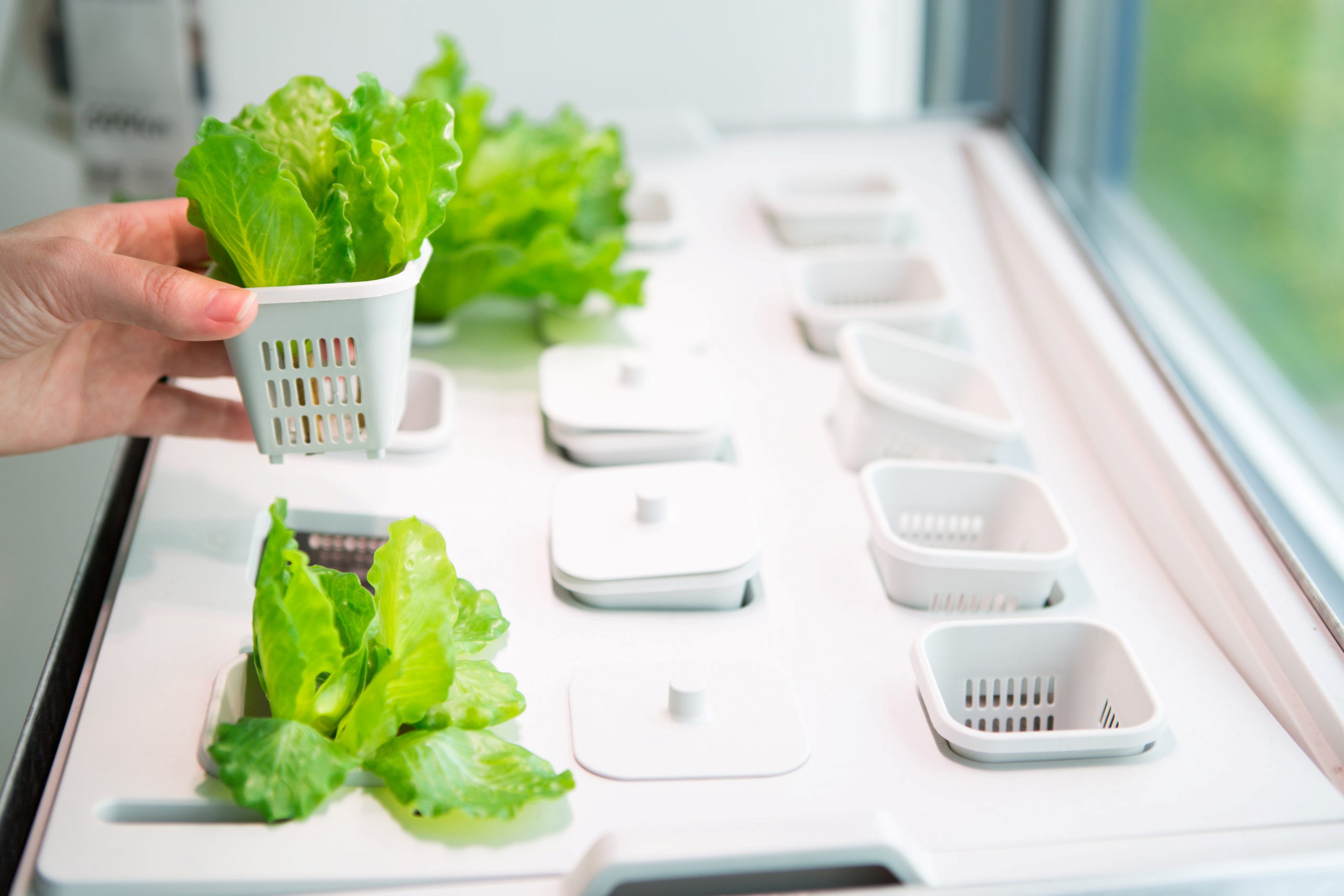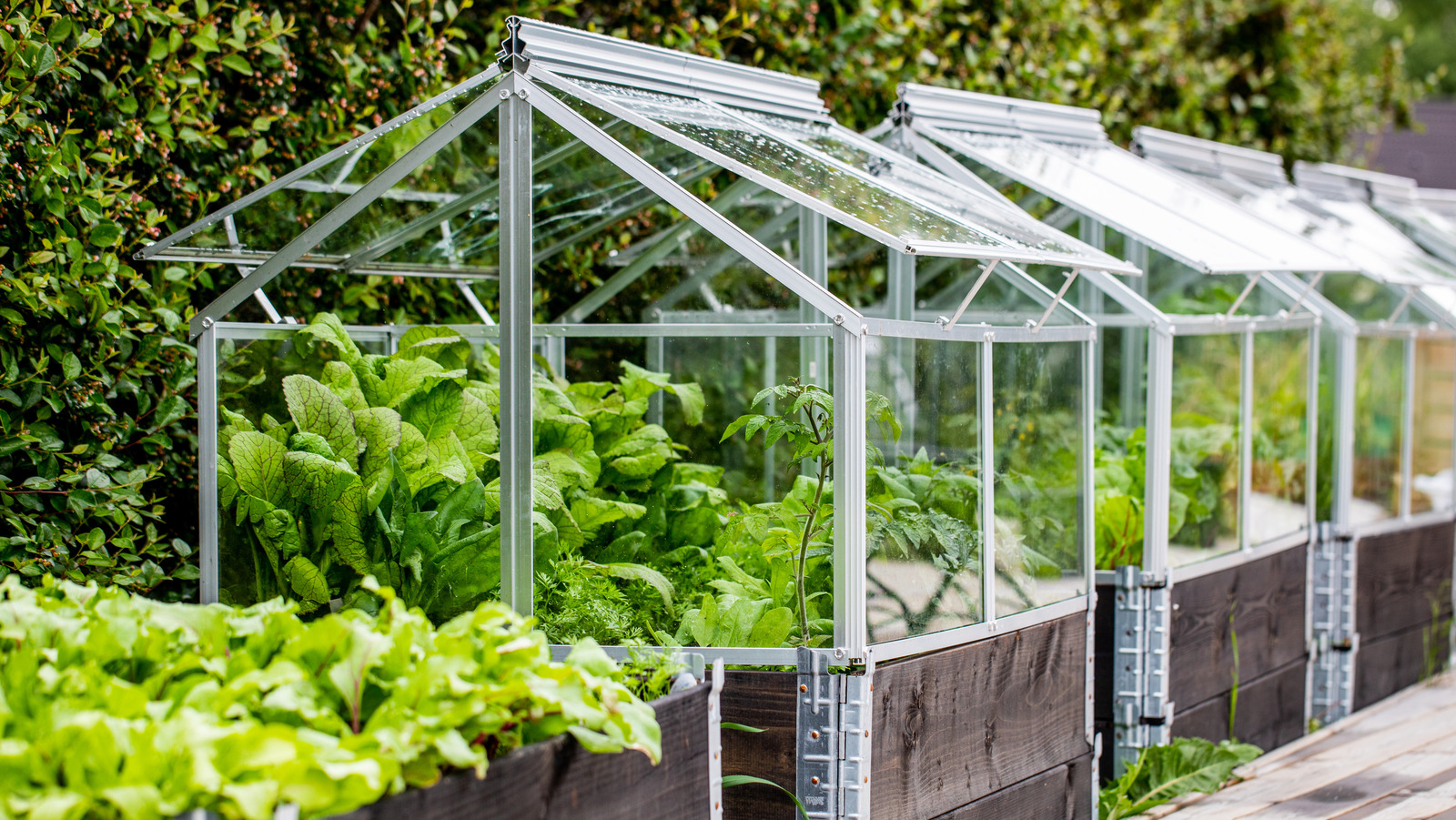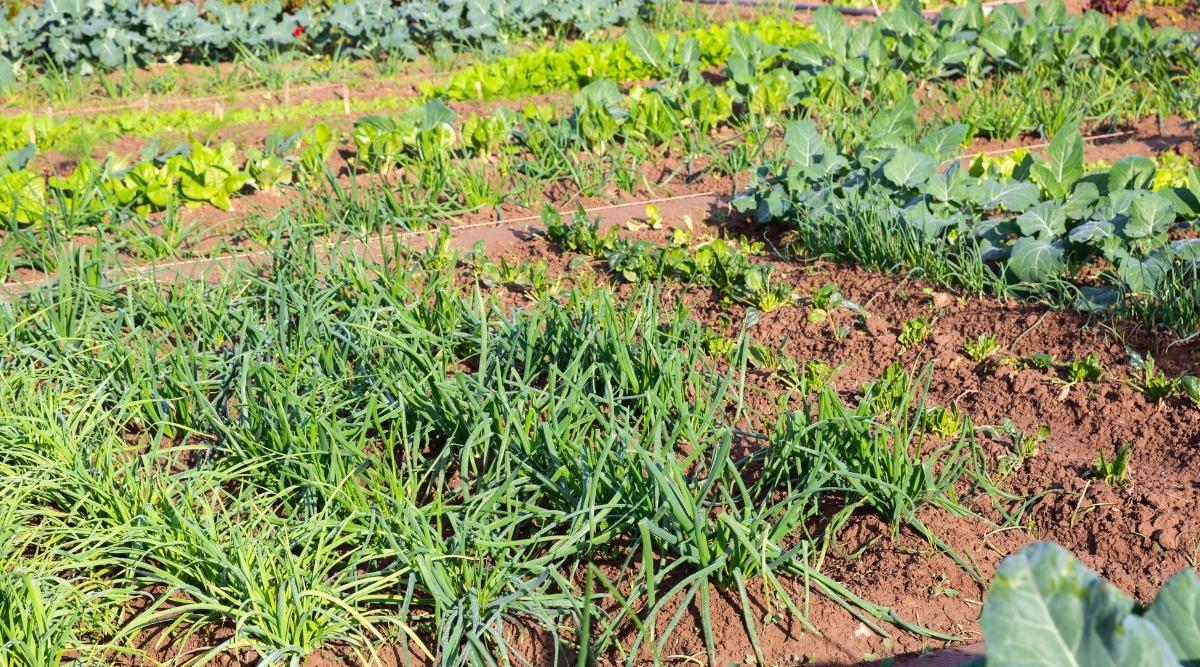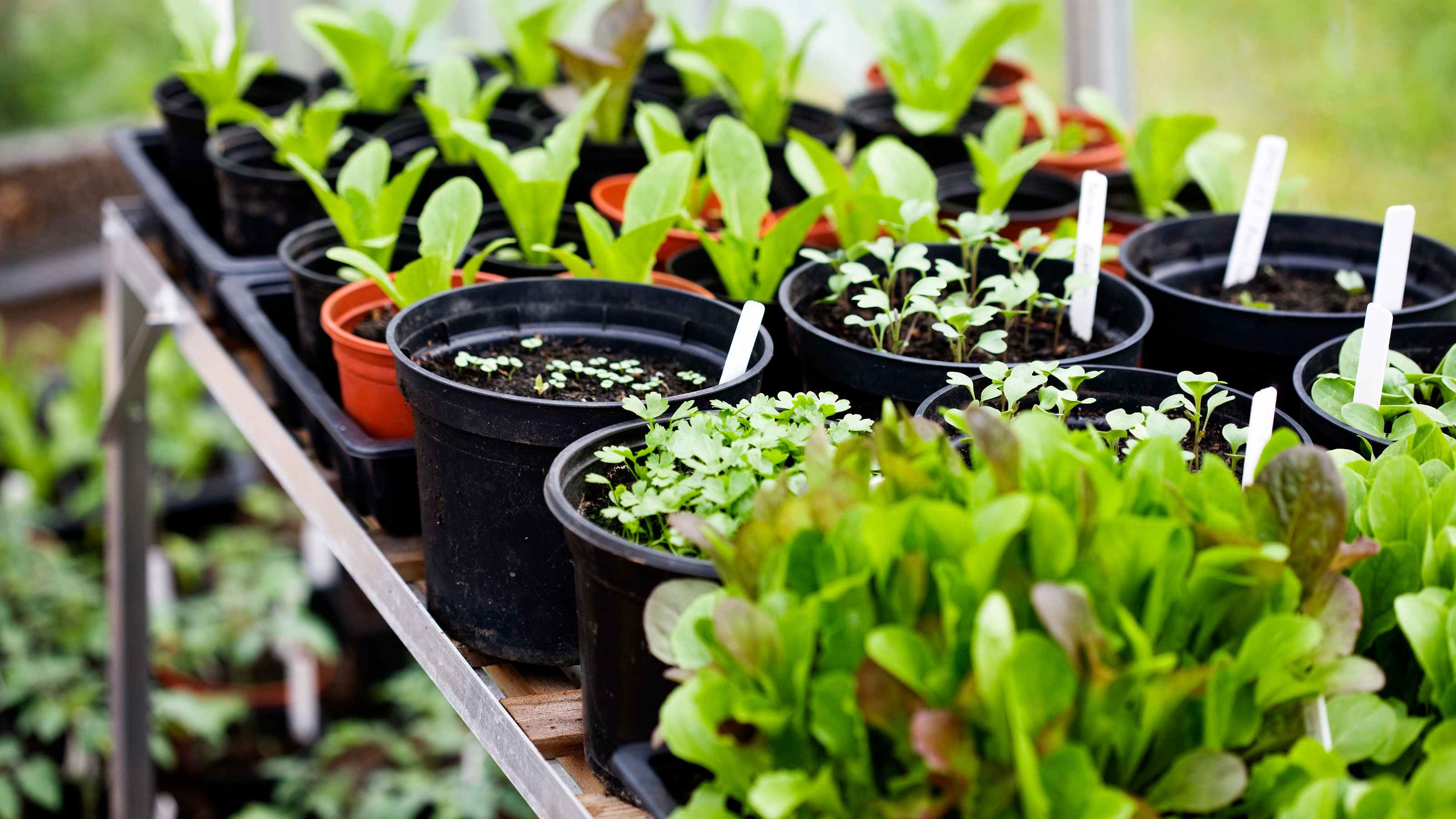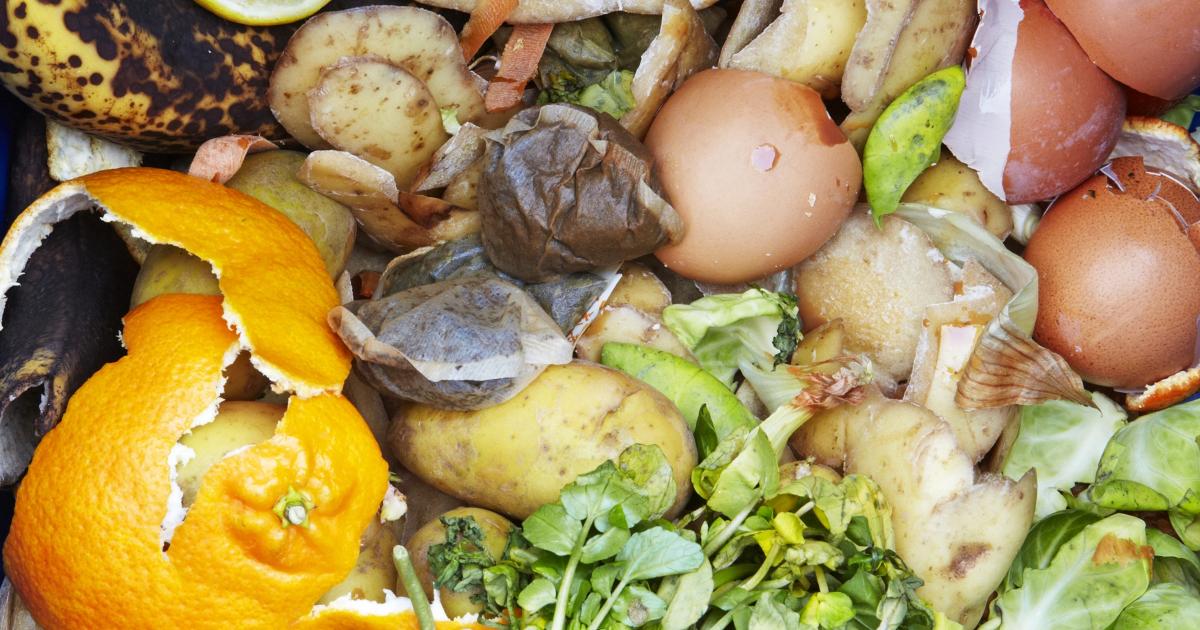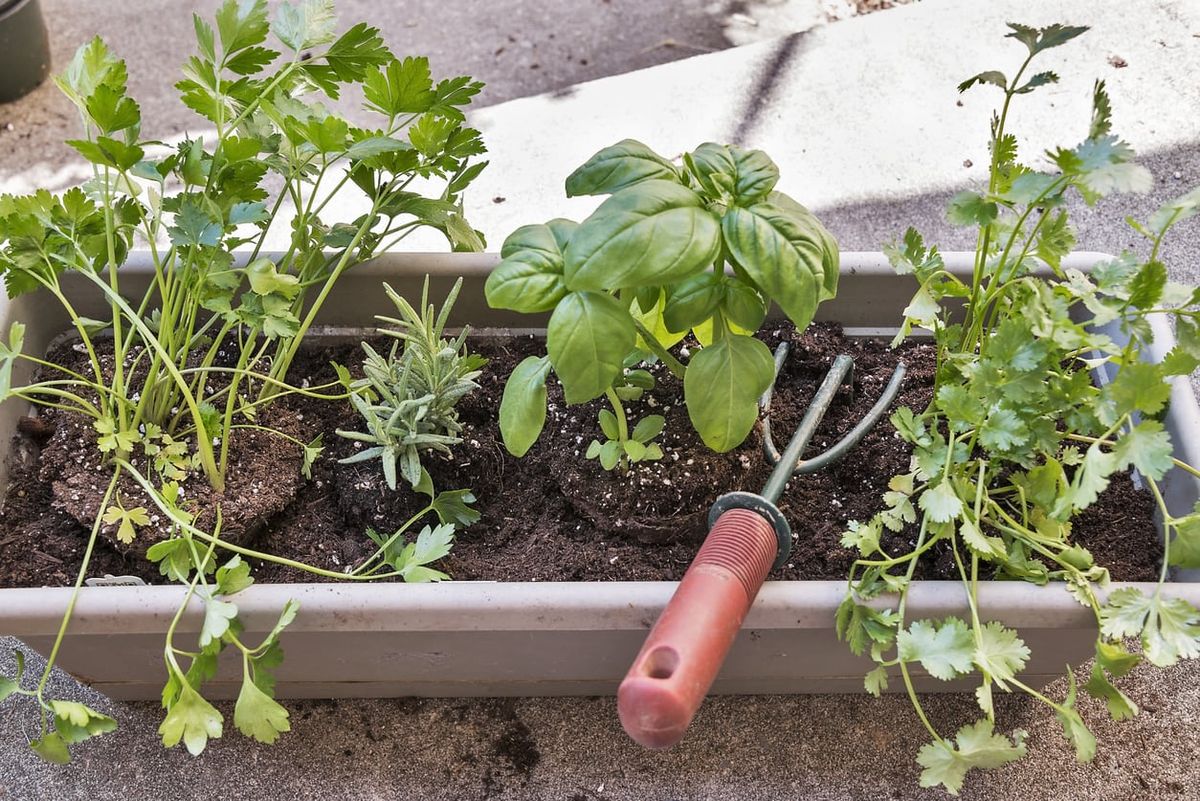Home>Types of Gardening>Edible Gardening>What Can I Grow In Hydroponics
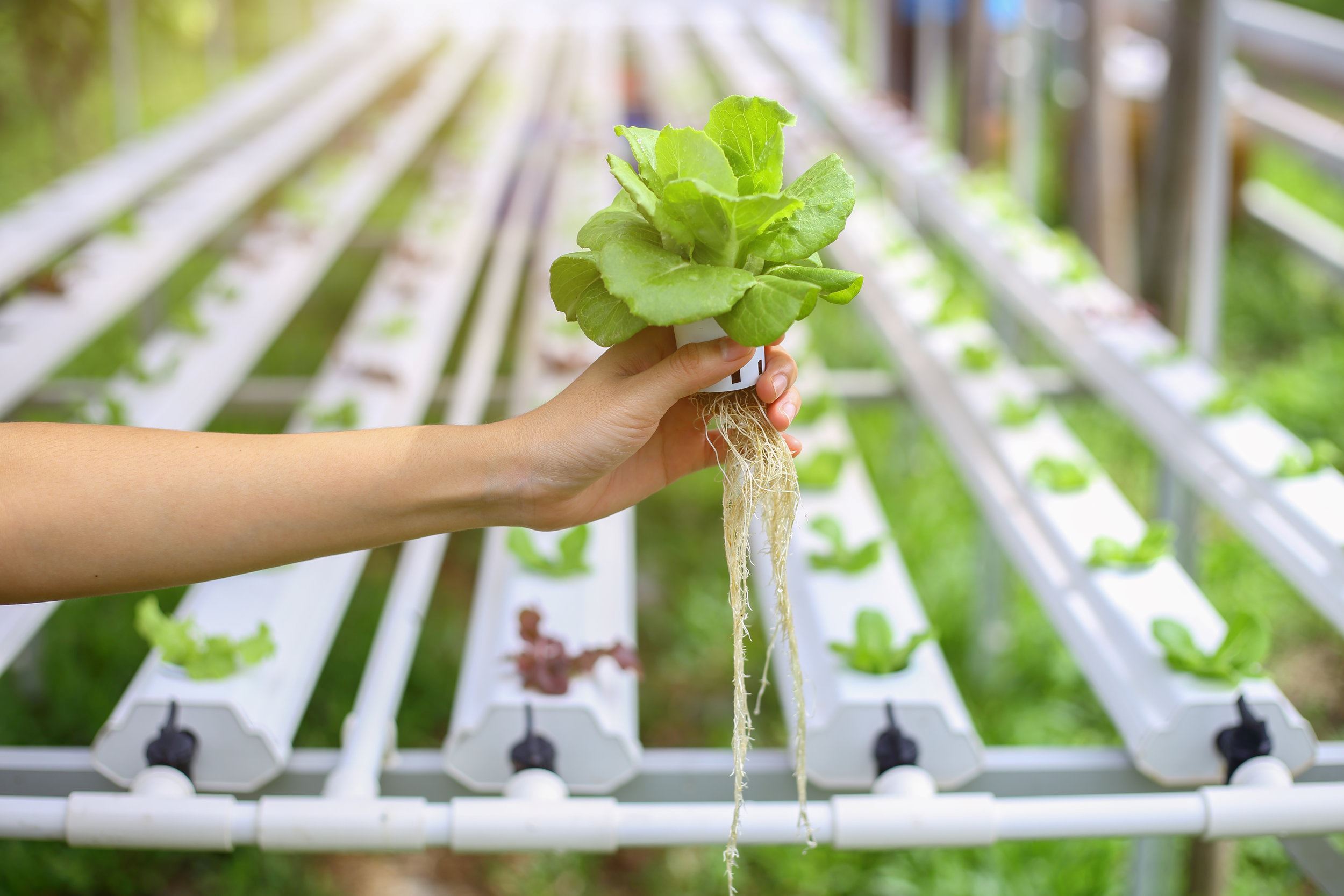

Edible Gardening
What Can I Grow In Hydroponics
Modified: February 8, 2024
Discover the possibilities of edible gardening with hydroponics. Grow a wide range of delicious and nutritious plants in a controlled environment for maximum yields. Start your hydroponic garden today!
(Many of the links in this article redirect to a specific reviewed product. Your purchase of these products through affiliate links helps to generate commission for Chicagolandgardening.com, at no extra cost. Learn more)
Table of Contents
Introduction
Welcome to the world of hydroponic gardening, where you can grow your own fresh and flavorful produce without the need for soil. Hydroponics is a fascinating gardening method that utilizes water-based nutrient solutions to nourish plants and provide them with optimal growing conditions.
With hydroponics, you can have a thriving garden no matter where you live – whether you have limited outdoor space, live in an apartment, or simply want to enjoy fresh produce year-round. It’s a versatile and sustainable gardening technique that offers numerous benefits.
First and foremost, hydroponics eliminates the need for soil, which means you can say goodbye to traditional gardening challenges such as weeding and dealing with pests. This method also requires less water compared to conventional gardening since the water is recirculated within the system.
Another major advantage of hydroponics is its ability to provide plants with precise amounts of nutrients, resulting in accelerated growth and higher yields. This controlled environment also reduces the risk of soil-borne diseases and allows you to have more control over the quality and flavor of your produce.
Hydroponic systems come in various forms, from basic Kratky setups to more advanced systems like nutrient film technique (NFT) or deep water culture (DWC). These systems offer different advantages and are suitable for different types of plants.
In this comprehensive guide, we will explore the various types of hydroponic systems, discuss the best plants to grow in hydroponics, and provide tips on how to set up and maintain a successful hydroponic garden.
Get ready to embark on a unique gardening experience that will not only yield fresh and delicious produce but also allow you to explore the wonders of hydroponics.
Benefits of Hydroponics
Hydroponic gardening offers a multitude of advantages that make it an increasingly popular choice among both seasoned gardeners and beginners. Let’s explore some of the key benefits of hydroponics:
- Saves Space: One of the biggest advantages of hydroponics is that it requires significantly less space compared to traditional soil-based gardening. With hydroponics, you can grow plants vertically or in compact systems, making it ideal for urban environments or small yards.
- Year-Round Growing: Hydroponics allows you to grow plants regardless of the season. By creating an artificial environment, you can provide your plants with the perfect conditions for growth, including temperature, light, and nutrients. This means you can enjoy fresh produce all year round.
- Conserves Water: Water scarcity is a growing concern, especially in drought-prone regions. Hydroponics is an eco-friendly solution as it uses up to 90% less water compared to traditional soil-based gardening. The water is recirculated within the system, greatly reducing waste.
- No Soil-Borne Diseases: Soil-borne diseases and pests can wreak havoc on traditional gardens. With hydroponics, you eliminate the risk of soil-borne diseases, resulting in healthier plants. This also reduces the need for pesticides, making your produce even safer to consume.
- Optimal Nutrient Delivery: In a hydroponic system, plants receive a precise and balanced mix of nutrients directly to their roots. This promotes faster growth and higher yields. You have full control over the nutrient levels, ensuring your plants receive exactly what they need at each stage of growth.
- Efficient Use of Space and Resources: Hydroponic systems are designed to maximize space and resources. Since plants don’t need to search for nutrients in the soil, they can focus more energy on growth and production. This efficiency translates into higher crop yields per square foot compared to traditional gardening.
- Reduced Environmental Impact: Hydroponics minimizes the use of chemical fertilizers and pesticides, making it a more environmentally friendly gardening method. By reducing the reliance on traditional farming practices, hydroponics helps conserve land, prevent soil erosion, and protect natural ecosystems.
These are just a few of the many benefits that hydroponics has to offer. Whether you’re a seasoned gardener or a beginner, this innovative gardening approach opens up a world of possibilities and allows you to grow your own nutritious food with ease and efficiency.
Types of Hydroponic Systems
Hydroponic gardening offers a wide range of system options, each with its own advantages and suitability for different types of plants. Here are some of the most common types of hydroponic systems:
- Drip System: This is one of the most popular hydroponic systems. It involves a pump that delivers nutrient-rich water to the plant roots through a network of tubes and emitters. The excess water is collected and recirculated, resulting in efficient water usage. Drip systems are versatile and can be used for a variety of plants, including larger vegetables and flowering crops.
- Nutrient Film Technique (NFT): In an NFT system, a thin film of nutrient-rich water continuously flows over the roots of the plants. The roots take up the necessary nutrients while excess water is collected and recirculated. NFT systems are ideal for growing leafy greens and herbs, as they provide continuous access to water and nutrients.
- Deep Water Culture (DWC): DWC is a simple and popular hydroponic system for beginners. Plants are suspended in containers filled with nutrient-rich water. The roots are submerged, allowing for direct nutrient uptake. Air stones or diffusers provide oxygen to the roots. DWC systems work well for a variety of plants, particularly those that thrive in waterlogged conditions like lettuce and herbs.
- Wick System: A wick system is one of the simplest types of hydroponic systems. It uses a wick to passively deliver nutrient solution from a reservoir to the plant roots. This system is low-maintenance and requires no pumps or electricity. However, it may not be suitable for larger or high-water-demanding plants due to its slower nutrient delivery.
- Aeroponics: Aeroponics is a high-tech hydroponic system that uses mist or aerosolized nutrient solution to provide moisture and nutrients to the plant roots. The roots are suspended in air, allowing for maximum oxygen exposure. Aeroponic systems offer fast growth rates and are particularly effective for plants that require high oxygen levels, such as lettuce, herbs, and strawberries.
These are just a few examples of the many hydroponic systems available. Each system has its own unique benefits and considerations. When choosing a hydroponic system, consider factors like space availability, plant type, and your level of experience. Experimenting with different systems can help you find the one that suits your needs and yields the best results.
Selecting the Right Hydroponic Plants
Choosing the right plants for your hydroponic garden is crucial for a successful and thriving system. While hydroponics can accommodate a wide variety of plants, there are certain factors to consider when selecting the most suitable crops:
- Growth Habit: Consider the growth habit of the plants. Some plants, like tomatoes and cucumbers, require vertical support or trellising to grow properly. Others, like leafy greens, have a low-profile and can be easily grown in a compact space.
- Space Requirement: Take into account the space available in your hydroponic system. Larger plants like bell peppers or melons may require more space, while smaller herbs and lettuce can be grown in tighter configurations.
- Nutrient Needs: Different plants have varying nutrient requirements. Some may require higher levels of certain nutrients like nitrogen or potassium. Understanding the specific nutrient needs of your chosen plants will help ensure they receive the appropriate nourishment.
- Light Intensity: Most hydroponic systems require supplemental lighting to provide sufficient light for plant growth. Consider the light requirements of the plants you wish to grow and ensure you have adequate lighting conditions in your setup.
- Harvest Time: Some plants have a longer growth cycle and take up more space in your hydroponic system. If you have limited space or want a quicker harvest, consider selecting plants with shorter growth cycles, such as leafy greens or herbs.
- Trial and Error: Don’t be afraid to experiment and try new plants in your hydroponic system. While certain plants may be more commonly grown hydroponically, there are always opportunities to discover new varieties that thrive in a controlled environment.
Popular plants for hydroponic gardening include herbs like basil, mint, and cilantro, leafy greens like lettuce and spinach, tomatoes, cucumbers, strawberries, and peppers. These plants have been successfully grown using various hydroponic methods and offer a range of flavors and culinary uses.
Remember to start with a few plants and gradually expand your hydroponic garden as you gain experience and confidence. Take note of plant growth patterns, nutrient requirements, and any adjustments needed to optimize your system. With proper planning and selection, you can enjoy a bountiful harvest of fresh and delicious produce from your hydroponic garden.
Popular Plants to Grow in Hydroponics
One of the great advantages of hydroponic gardening is the ability to grow a wide range of plants, from herbs to vegetables and even fruits. Here are some popular plants that thrive in hydroponic systems:
- Herbs: Basil, mint, cilantro, and parsley are excellent choices for hydroponic herb gardens. They require minimal space, have fast growth rates, and can be harvested as needed for fresh and flavorful additions to your meals.
- Leafy Greens: Lettuce, kale, spinach, and Swiss chard are ideal crops for hydroponics. They grow quickly, have shallow root systems, and can be harvested in a cut-and-come-again fashion, allowing for continuous harvest throughout the growing season.
- Tomatoes: Hydroponic systems provide optimal conditions for growing tomatoes. Varieties like cherry tomatoes, beefsteak tomatoes, or Roma tomatoes can thrive in hydroponics and produce abundant yields of juicy and flavorful fruits.
- Cucumbers: These vining plants are well-suited for vertical hydroponic setups. Both slicing cucumbers and smaller varieties like Persian cucumbers can be grown hydroponically to yield crisp and tasty cucumbers for salads and snacking.
- Strawberries: Hydroponics is an excellent way to grow strawberries, which require good drainage and consistent moisture levels. Vertical hydroponic systems or stacked towers work well for growing strawberries, allowing you to enjoy sweet and juicy berries from your own garden.
- Peppers: Bell peppers, chili peppers, and jalapeños are great options for hydroponic gardening. These heat-loving plants thrive in the controlled environment of hydroponics and provide you with vibrant and delicious peppers for cooking and adding zest to dishes.
These are just a few examples of the many plants that can be successfully grown using hydroponics. The key to successful hydroponic gardening is to choose plants that are well-suited to the specific conditions of your system, including light levels, temperature, and available space.
Experiment with different plant varieties to find those that perform best in your hydroponic setup. Remember to monitor nutrient levels, provide adequate support when needed, and adjust your growing techniques as you gain more experience with hydroponics. With a bit of practice and care, you can enjoy a diverse and abundant harvest from your hydroponic garden.
Herbs
Herbs are a popular choice for hydroponic gardening due to their compact size, quick growth, and intense flavors. Here are some herbs that flourish in hydroponic systems:
- Basil: Basil is a versatile and aromatic herb that is well-suited for hydroponics. Varieties such as Genovese, Thai, and Lemon basil thrive in hydroponic environments. Harvest the leaves for pesto, sauces, or to top off your favorite dishes.
- Mint: Mint is a refreshing herb that adds a cool and zesty flavor to beverages, desserts, and savory dishes. Spearmint and peppermint are popular varieties that grow well in hydroponic systems. Enjoy the pleasures of homegrown mint leaves in your mojitos, teas, or desserts.
- Cilantro: Cilantro, also known as coriander, offers a unique taste that adds a fresh and citrusy flavor to many dishes. Its leaves are a staple in Mexican, Indian, and Asian cuisine. Harvest the leaves and use them in salsas, curries, salads, and more.
- Parsley: Parsley is a versatile herb that adds a vibrant green color and delicate flavor to a range of dishes. Both curly and flat-leaf varieties thrive in hydroponic setups. Use parsley to garnish soups, salads, pasta dishes, or as a key ingredient in homemade pesto.
- Thyme: Thyme is a fragrant herb with a slightly minty and lemony flavor. It pairs well with meats, roasted vegetables, and sauces. Varieties like English thyme and Lemon thyme grow successfully in hydroponic systems and can be harvested for use in a variety of recipes.
When growing herbs hydroponically, it is essential to maintain the optimal growing conditions. Provide ample light, maintain the appropriate temperature and humidity levels, and ensure proper nutrient delivery. Herbs generally don’t require as much space as other larger plants, making them suitable for smaller hydroponic setups.
Remember to regularly monitor your herbs for signs of pests or disease, as these can impact their growth and flavor. Harvest the leaves as needed, which not only promotes continued growth but also allows you to enjoy the freshest and most flavorful herbs.
With hydroponic gardening, you can have a year-round supply of these aromatic and tasty herbs readily available for your culinary adventures. Get creative and experiment with different herb combinations to elevate the flavors of your favorite dishes, all from the convenience of your own hydroponic garden.
Leafy Greens
Leafy greens are a perfect choice for hydroponic gardening, as they grow quickly, have shallow root systems, and offer a continuous harvest throughout the growing season. Here are some popular leafy greens to consider growing in your hydroponic system:
- Lettuce: Lettuce is a staple salad green that thrives in hydroponic setups. Varieties such as Butterhead, Romaine, and Bibb lettuce are well-suited for hydroponics. Harvest outer leaves as needed for a continuous supply of fresh and crisp lettuce.
- Kale: Kale is a nutrient-dense leafy green with a slightly bitter taste. Varieties like Tuscan kale and Red Russian kale grow well in hydroponics and can be harvested at baby leaf stages for salads or allowed to mature for cooking purposes.
- Spinach: Spinach is rich in vitamins and minerals and is a versatile green that can be enjoyed fresh or cooked. Choose varieties like Baby Spinach or New Zealand Spinach for hydroponic cultivation. Harvest the outer leaves or the whole plant when mature.
- Swiss Chard: Swiss chard, with its colorful stems and vibrant leaves, is not only visually appealing but also nutritious. Varieties like Rainbow Chard or Bright Lights Chard are excellent choices for hydroponic gardening. Harvest the outer leaves for salads or allow the plants to grow for larger, cooking-size leaves.
- Mizuna: Mizuna is a Japanese mustard green with a mild and peppery flavor. It is prized for its delicate, lacy leaves. Hydroponically grown Mizuna can be harvested at the baby leaf stage for salads or allowed to mature for use in stir-fries, soups, and other dishes.
Leafy greens are generally easy to grow in hydroponics, as they don’t require much vertical space and have shorter growth cycles compared to other plants. They also offer a great opportunity to practice cut-and-come-again harvesting, allowing you to enjoy fresh greens without fully harvesting the plant.
Monitor your leafy greens closely for signs of nutrient deficiency or pests. Adjust nutrient solutions as needed to promote healthy growth, and provide sufficient light and air circulation to prevent the development of diseases. With proper care, you can enjoy a steady supply of nutritious and delicious leafy greens from your hydroponic garden.
Tomatoes
Tomatoes are one of the most beloved and widely grown fruits in hydroponic gardening. With their delicious flavor and versatility in various culinary creations, tomatoes thrive in hydroponic systems. Here are some popular tomato varieties that are well-suited for hydroponics:
- Cherry Tomatoes: Cherry tomatoes, such as the Sweet 100, Sungold, or Cherry Cascade, are perfect for hydroponic gardens. These small, bite-sized tomatoes have a sweet and tangy flavor, making them perfect for salads, snacking, or garnishing dishes.
- Beefsteak Tomatoes: Beefsteak tomatoes, known for their large size and meaty texture, are a favorite for sandwiches, burgers, and slicing for salads. Varieties like Beefmaster, Brandywine, or Mortgage Lifter perform well in hydroponic setups.
- Roma Tomatoes: Roma tomatoes, also known as plum tomatoes, are perfect for sauces, canning, and drying. Varieties like San Marzano or Amish Paste are well-suited for hydroponic cultivation, producing elongated, flavorful fruits.
- Grape Tomatoes: Grape tomatoes, like the Sugar Snack or Grape Tomato Hybrid, are elongated and sweeter than cherry tomatoes. They are a great addition to salads, pasta dishes, or for snacking straight from the vine. They produce abundantly in hydroponic systems.
Tomatoes thrive in hydroponic environments due to the controlled growing conditions that allow for optimal nutrient absorption and ample airflow. Ensure your hydroponic system provides sufficient support, such as trellises or stakes, as tomatoes are vining plants that require vertical growth support.
Monitor the nutrient levels closely, as tomatoes are known to have higher nutrient requirements, particularly for phosphorus and potassium. Consistent pruning and removing suckers will help redirect energy to fruit production, improving overall yields.
As the fruits ripen, harvest them when they reach their desired ripeness and color. Vine-ripened tomatoes will have the best flavor and sweetness. Continued harvesting will encourage the growth of new fruits.
Whether you prefer juicy cherry tomatoes, robust beefsteaks, or tangy roma tomatoes, hydroponics provides an excellent method for growing flavorful and abundant tomato crops. Enjoy the satisfaction of harvesting vine-ripened tomatoes straight from your hydroponic garden to enhance your culinary creations.
Cucumbers
Cucumbers are refreshing and versatile vegetables that thrive in hydroponic gardening. With their crisp texture and mild flavor, cucumbers are a popular choice for salads, pickling, and snacking. Here are some cucumber varieties that flourish in hydroponic systems:
- Slicing Cucumbers: Varieties like Marketmore, Straight Eight, or English cucumbers are commonly grown in hydroponics for their elongated shape and delicious taste. These cucumbers are perfect for slicing into salads or sandwiches.
- Persian Cucumbers: Persian cucumbers, known for their small size and crunchy texture, are excellent for hydroponic cultivation. These seedless cucumbers, such as Diva or Dasher II, are perfect for snacking, adding to salads, or for making refreshing cucumber-infused water.
Cucumbers are vining plants that require vertical support as they grow. Trellises, stakes, or other structures can help guide their growth and maximize space utilization in your hydroponic setup. Regular pruning and removing of side shoots or suckers will redirect energy to fruit production and improve overall yields.
Monitor the nutrient levels closely, as cucumbers have higher nutrient requirements, particularly for nitrogen and potassium. Maintaining the appropriate nutrient balance will promote healthy foliage growth and encourage the development of abundant cucumbers.
Harvest cucumbers when they reach the desired size and color. Avoid letting them become overly mature, as cucumbers left on the vine for too long can become bitter. Regular harvesting stimulates continuous growth and ensures a steady supply of fresh cucumbers for your culinary needs.
Whether you enjoy crisp slices of cucumber in a salad or prefer pickling them for a tangy snack, hydroponic gardening provides an excellent environment for growing delicious and bountiful cucumber crops. Embrace the joy of harvesting homegrown cucumbers from your hydroponic garden and elevate your meals with these versatile and refreshing vegetables.
Strawberries
Strawberries are a delightfully sweet and juicy fruit that can thrive in hydroponic systems. With their vibrant color and luscious flavor, strawberries are a popular choice for both gardeners and fruit enthusiasts. Here are some key considerations for successfully growing strawberries hydroponically:
- Varieties: Choose strawberry varieties that are well-suited for hydroponic cultivation, such as Albion, Evie-2, or Seascape. These varieties are known for their vigorous growth, disease resistance, and abundant fruit production.
- Vertical Systems: Strawberries are trailing plants, so vertical systems like towers or stacked planters work well to maximize space. This allows you to grow multiple plants in a compact area and facilitates optimal air circulation and light exposure for better fruit development.
- Nutrient Delivery: Strawberries have specific nutrient requirements, especially during the flowering and fruiting stages. Provide a well-balanced hydroponic nutrient solution that contains essential macronutrients and micronutrients, paying attention to phosphorus and potassium levels for robust fruit development.
- Pollination: Strawberries require pollination to set fruit. Bees and other pollinators may not have easy access to indoor hydroponic systems. To ensure pollination, gently brush the flowers with a small paintbrush or use a vibrating tool to mimic natural pollination.
- Temperature and Humidity: Maintain optimal growing conditions for strawberries, as they prefer cooler temperatures between 60-75°F (15-24°C) and higher humidity levels. Adequate airflow is crucial to prevent mold or fungal issues, while supplemental lighting can provide the necessary light for proper growth.
- Harvesting: Harvest strawberries when they are fully ripe and have reached their full color. Wait until the strawberries have turned red all the way to the tips. They should be plump and have a delicious aroma. Gently pick the berries, leaving the stems intact.
Strawberries grown hydroponically offer several advantages, including cleaner fruits, less risk of soil-borne diseases, and the ability to enjoy ripe strawberries throughout the year. The flavor and sweetness of homegrown strawberries make them a delightful and satisfying addition to salads, desserts, or simply enjoyed on their own.
By providing optimal growing conditions and nutrient solutions, you can enjoy a consistent harvest of fresh, juicy strawberries from your hydroponic garden.
Conclusion
Hydroponic gardening opens up a world of possibilities for growing your own fresh and flavorful produce. Whether you have limited outdoor space, want to enjoy fresh vegetables year-round, or simply want to try something new, hydroponics offers numerous benefits and exciting opportunities.
From herbs like basil and mint to leafy greens, tomatoes, cucumbers, and strawberries, there is a wide range of plants that thrive in hydroponic systems. You have the freedom to select the plants that suit your taste preferences, available space, and growing conditions.
Hydroponics offers advantages such as space efficiency, water conservation, precise nutrient delivery, and reduced environmental impact. By eliminating soil-borne diseases, pests, and weeds, hydroponic gardening simplifies the maintenance and care of your plants, allowing you to focus on enjoying the growing process and reaping the rewards of a bountiful harvest.
Remember to select the right hydroponic system for your chosen plants, ensuring that they have the necessary support, light, and nutrients to thrive. Monitor and adjust nutrient levels, provide adequate airflow, and implement proper care techniques to promote healthy growth and maximize yields.
Whether you’re growing fresh herbs for culinary delights, cultivating leafy greens for salads, harvesting juicy tomatoes and cucumbers, or enjoying the sweetness of homegrown strawberries, hydroponics offers an innovative and efficient way to grow your own edible garden.
With dedication, experimentation, and a bit of creativity, you can unlock the full potential of hydroponic gardening and enjoy a continuous supply of fresh and delicious produce throughout the year. Get started on your hydroponic journey and embark on a rewarding and fulfilling gardening experience like no other.
